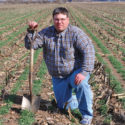Advertise Follow Us
Cover Crops
Cover Crops Power No-Till Payoff
From conservation to higher yields to reduced fertilizer and herbicide use, cover crops brought an immediate payback for Jacob Farms.
Read More
Putting More In The Bin, More In The Bank
A diverse cropping rotation, cover crops and onfarm research helps Ontario no-tiller/ridge-tiller Shawn McRae achieve soil and financial health.
Read More
Mixes Boost The Power Of Cover Crops
Here are tips and steps for no-tillers looking to plant and reap the benefits of multi-species cover crop mixes.
Read More

.png?height=125&t=1731942302&width=150)







